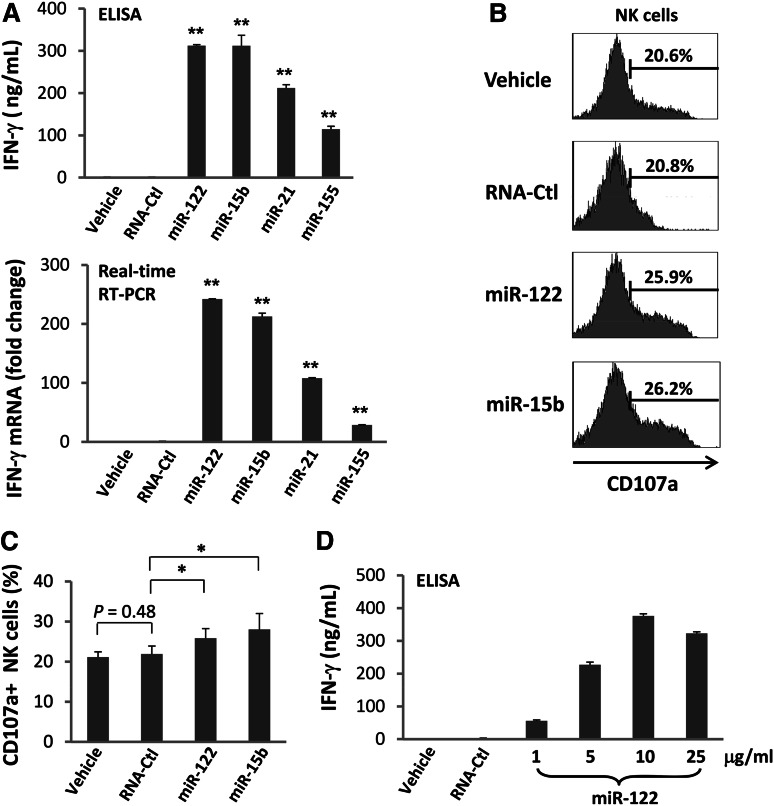Figure 2.
miRNAs increase IFN-γ production by NK cells. (A) Highly purified (≥99%) human NK cells were treated with miRNAs, DOTAP vehicle control, or nonspecific, single-stranded RNA, RNA41 (RNA-Ctl),24 for 36 hours in the presence of a low concentration of IL-12 (2.5 ng/mL). Supernatants were harvested for ELISA and cells were harvested for real-time RT-PCR analysis to determine the levels of IFN-γ secretion (upper panel) and gene expression (lower panel), respectively. Gene expression of the vehicle was normalized to 1. Experimental values are each presented as fold change compared with that of the vehicle. Data shown represent 1 of 3 donors with similar results. (B-C) Highly purified human NK cells were treated with miRNAs or DOTAP vehicle control for 36 hours in the presence of a low concentration of IL-12 (2.5 ng/mL). The cells were then incubated with K562 tumor cells at a ratio of 1:1 (effector: target). After 4 hours, CD107a expression was assessed by flow cytometric analysis. Shown in C are representative data from 1 of 5 donors with similar results. (C) Summary data of 5 donors. In all panels, error bars represent standard deviation. *P < .05 and **P < .01. (D) Cells were treated and data were collected as described in (A), with the exception that concentrations of miR-122 were varied, as indicated on the X-axis. Data suggest that miR-122 activates NK cells in a dose-dependent fashion.

